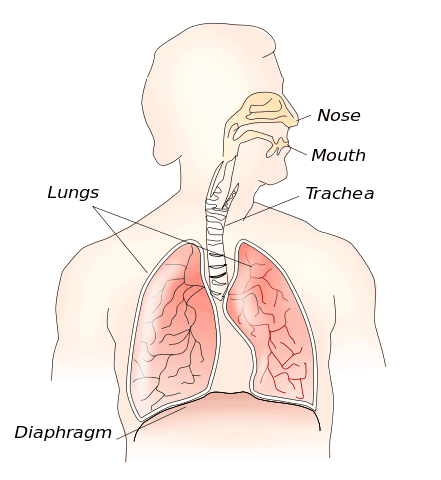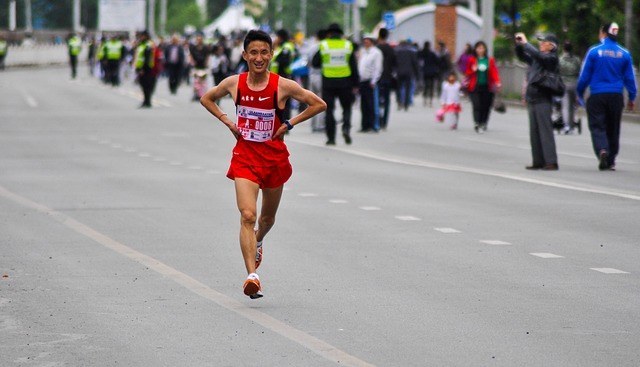The air is crisp and cold, the skies are clear, and you’ve just started your morning run. You only have 20 minutes to squeeze in a training session, so you decide to skip the warm up.
You’ve been running for a few minutes at your training pace, when suddenly, a sharp pain in your side stops you in your tracks.
Say hello to side stitches.
A side stitch, also known as a side cramp or a side ache, is the sharp, piercing pain just under the rib cage that occurs during strenuous exercise. This explains why many beginners, who are just starting to push themselves past their normal limits, report experiencing side pain when running.
Although the exact cause is still unknown, there are four tactics you can use to prevent side stitches and one technique you can use to stop an attack immediately.
How To Prevent Side Stitches
Here are four ways you can try to prevent side stitches.
Train Your Core
One theory for the cause of side stitches is that your diaphragm, like any other muscle in your body, can fatigue and cramp, causing the dreaded pain in your sides.

The diaphragm is the sheet of muscle that separates your thoracic cavity (chest) from your abdominal cavity and is responsible for regulating breathing. When the diaphragm contracts, the volume of the thoracic cavity increases which causes air to be drawn into the lungs.
Training the muscles in your core will also strengthen your diaphragm muscles, making them less likely to fatigue and cramp. It will also allow you to breathe deeply for longer, which is the next tip for preventing side stitches.
Breathe Deeply
Olympian Jeff Galloway asserts that side stitches are caused by shallow breathing. This is often described as “chest breathing” and is a common mistake made by beginners. The more oxygen you can deliver to your muscles (including your diaphragm), the less likely they are to fatigue and cramp.
To breathe deeply and use the capacity of your lower lungs, you have to engage and contract your diaphragm. If this is done correctly, your stomach will rise and fall with each breath.
Check out this short video from eHowFitness for an easy exercise to practice deeper breathing.
Plan Your Pre-Run Meal
What and when you eat or drink before your run can have a dramatic effect on your chances of having side stitches.
One theory says that a full stomach jolting up and down (in an activity such as running) will cause excessive strain on the ligaments and membranes that hold all of the contents of your abdominal cavity, eventually resulting in side stitches.
Another theory says that if you are digesting food, blood is diverted away from your diaphragm and towards your stomach where it is needed to help with digestion. This loss of blood flow to the diaphragm reduces the amount of oxygen delivered to it, which in turn increases the chance of fatigue and cramps.
Finally, a study of 40 athletes with a history of side stitches revealed that sugary drinks before exercise greatly increased the chance of experiencing side stitches. The higher the concentration of sugar, the higher the chances of side stitches.
In summary, keep these three tips in mind when planning your pre-run meal:
- Avoid eating large, hefty meals before a run
- Avoid eating slow digesting foods high in fat and fiber 1 to 2 hours before a run
- Avoid drinking sugary drinks such as fruit juice and soda before a run
Never Skip A Warm Up
Going from zero to full speed is a surefire way to get side stitches (and an injury too). The diaphragm, like any other muscle, needs a good warm up to loosen up for optimal performance.
This is also a good time to practice deep breathing while your body and heart rate ramps up to working speed.
How To Stop A Side Stitch Attack
Occasionally, no matter how much you’ve prepared, you will still get a side stitch.
When that happens, here’s what you should do to stop it within seconds:
- Slow your pace
- Determine which side of your body has the stitch (typically the right side)
- Time your exhales when the opposite foot of the side of the stitch hits the ground
For example, if the stitch is on your right side, time your exhales when your left foot strikes the ground. You should continue to breath deeply during this time for the quickest recovery.
Final Thoughts
Side stitches hurt. Really bad.
For beginner and experienced runners alike, side stitches can be extremely uncomfortable and discouraging.
Hopefully with these tips, you now know how you can prevent and deal with side pain when running. Not only are these tactics effective for dealing with side stitches, they are also just a part of good running practices.


Comments are closed.